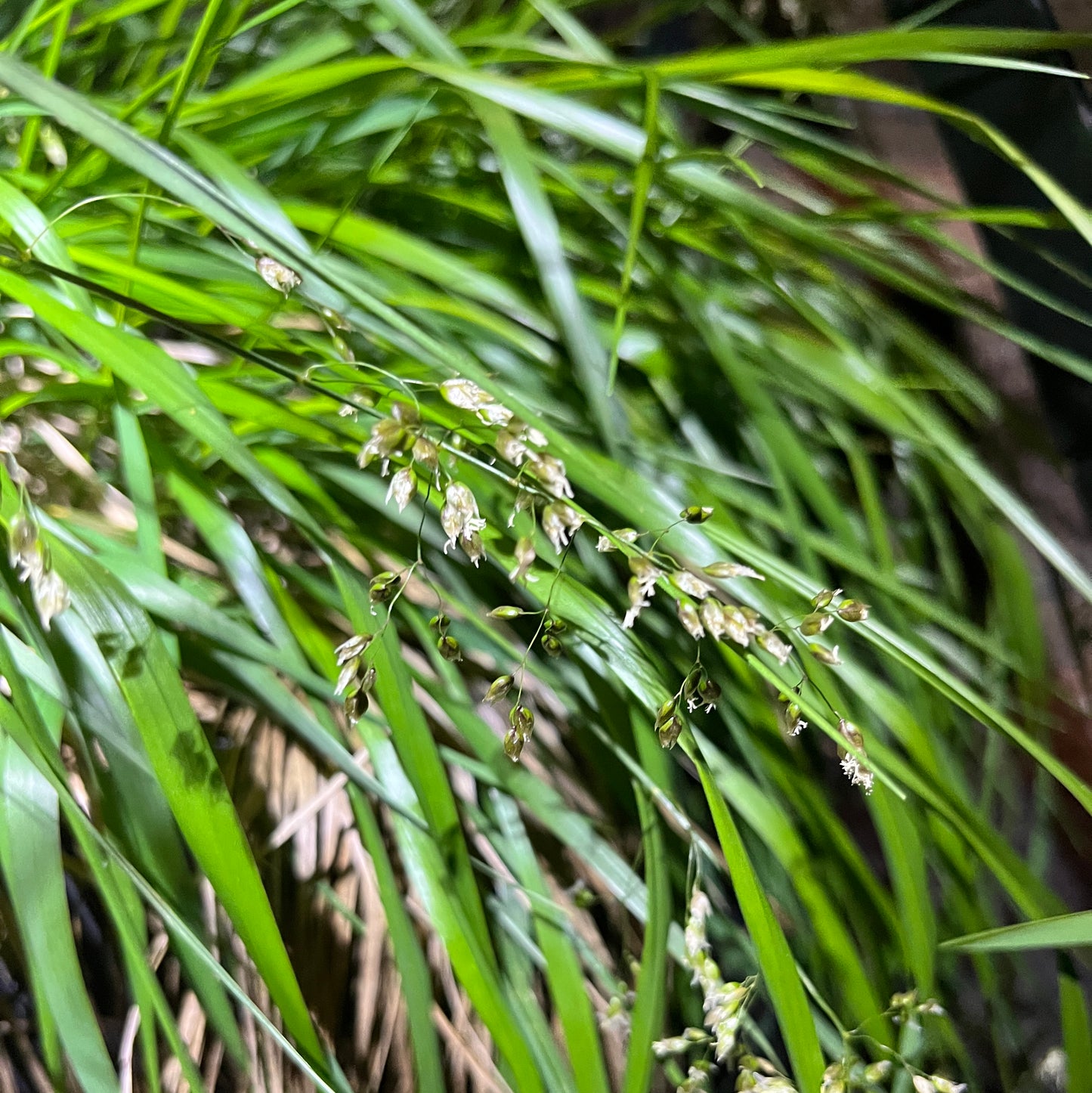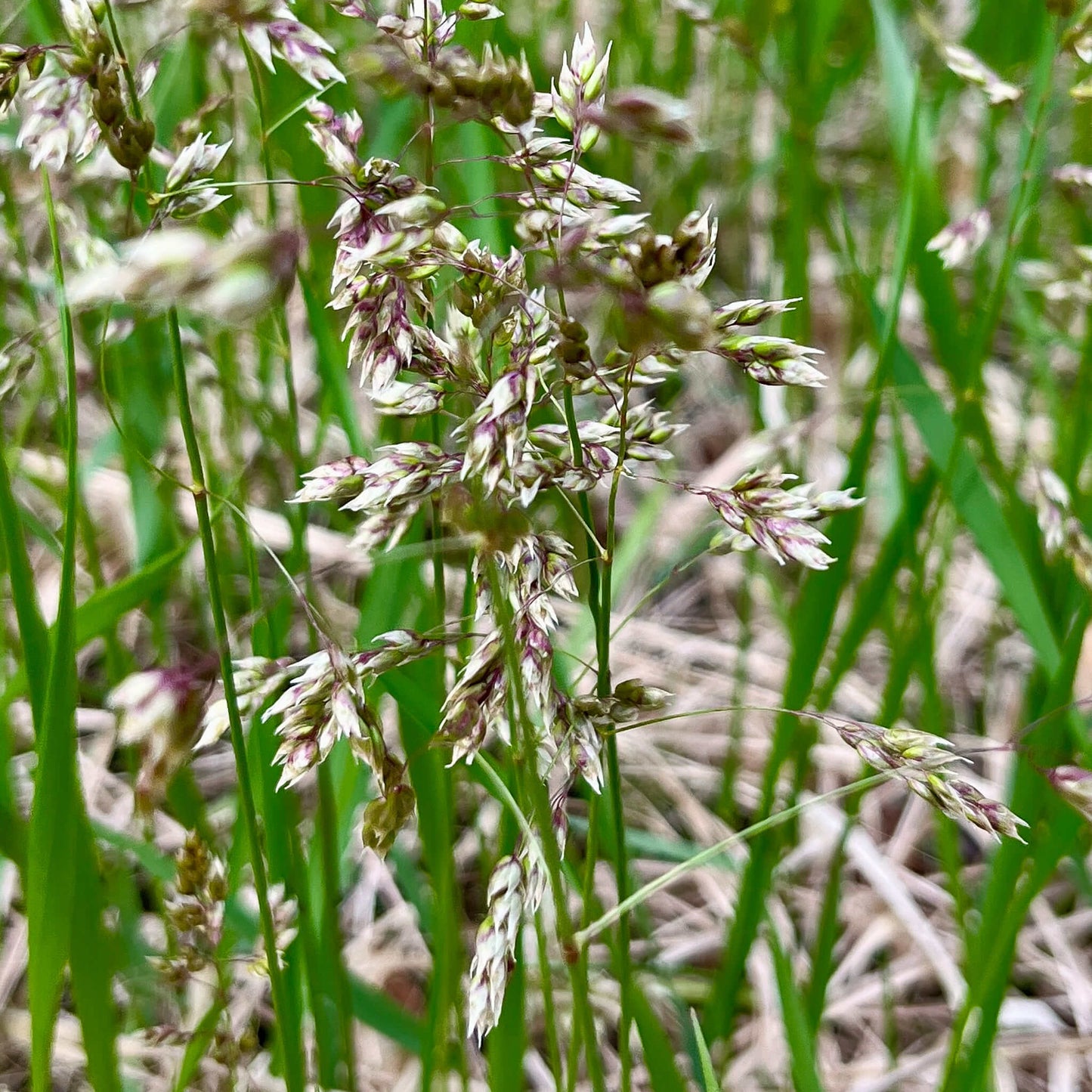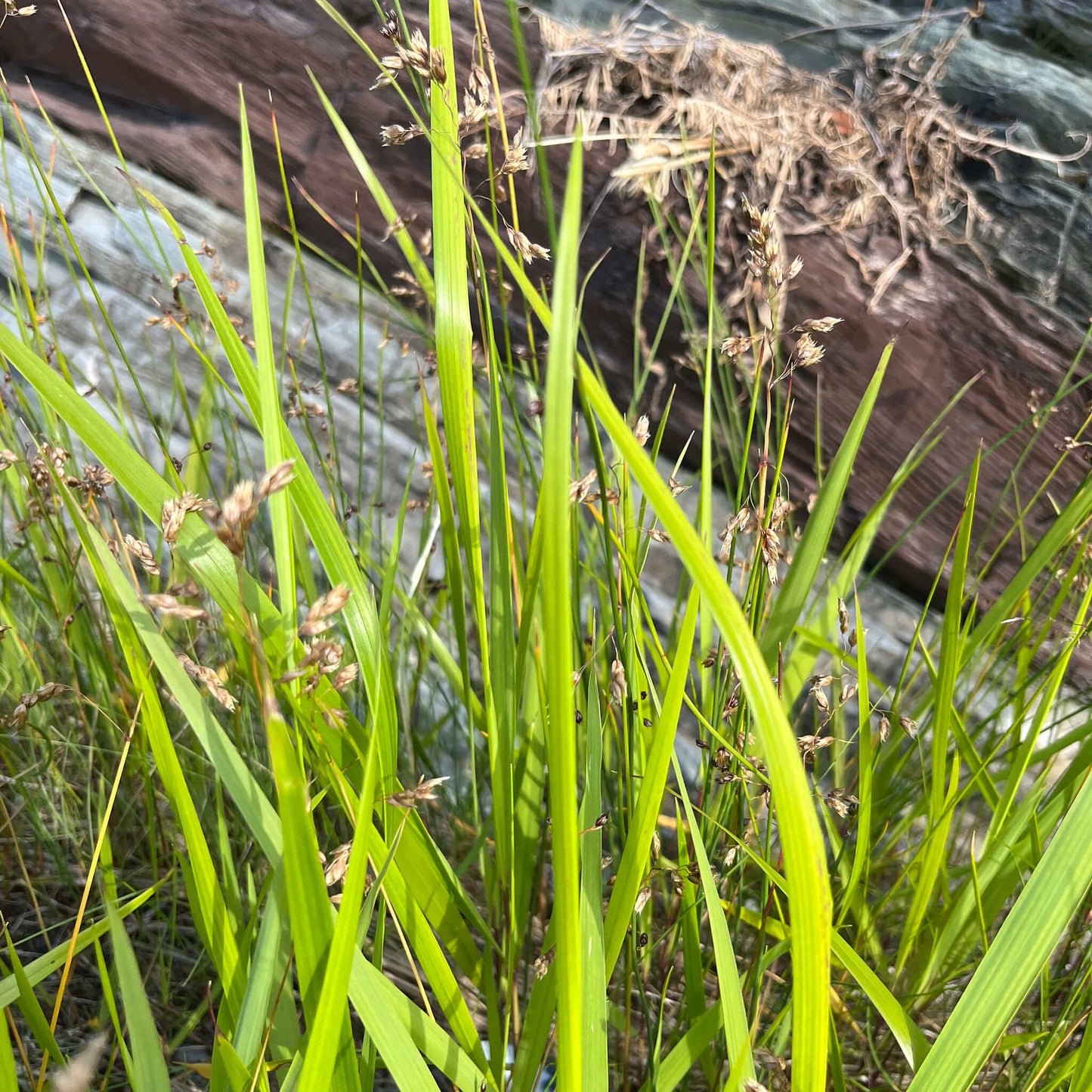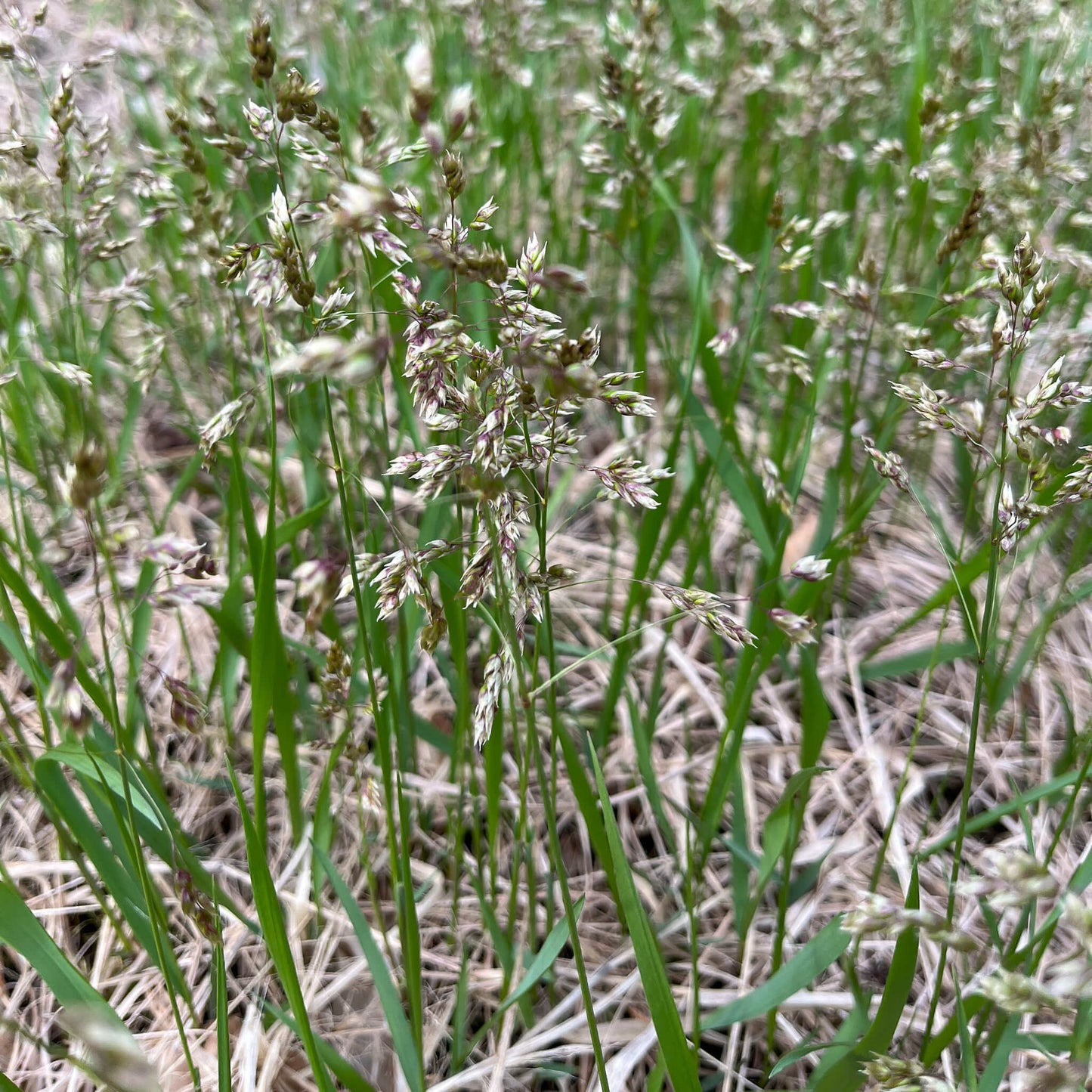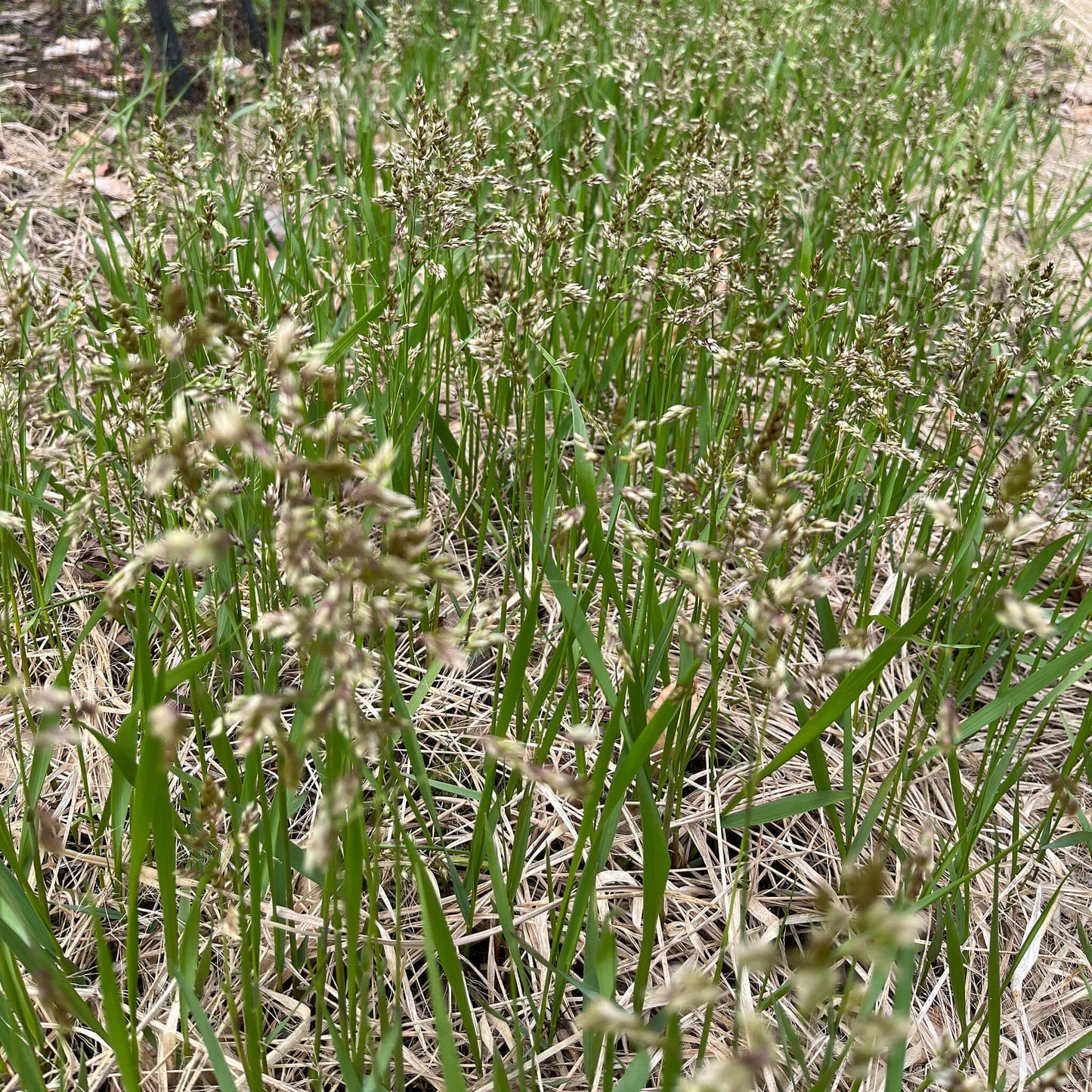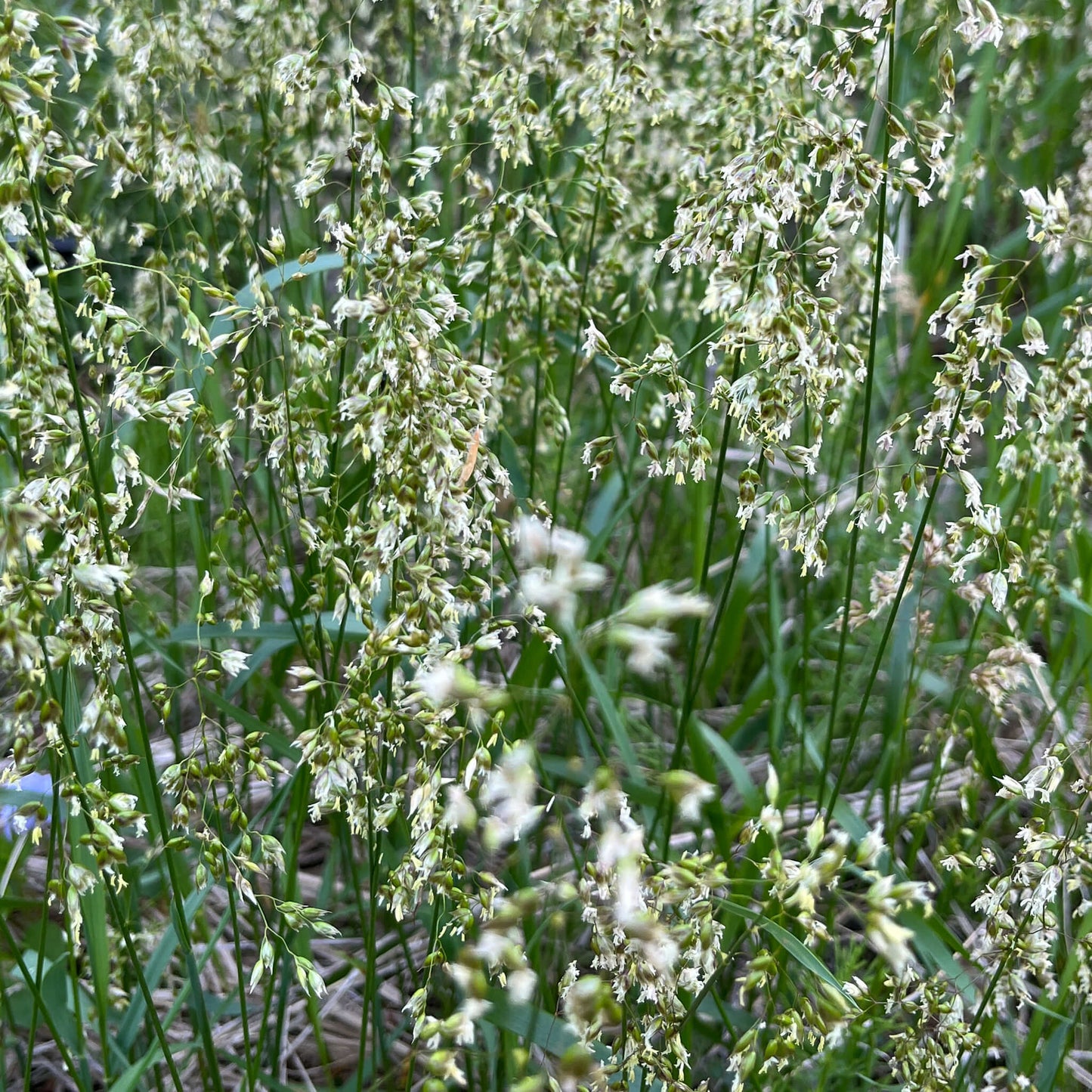This site is protected by hCaptcha and the hCaptcha Privacy Policy and Terms of Service apply.
For successful seedlings,
see the growing notes at the bottom of the page!
Sweetgrass (Anthoxanthum nitens, syn. Hierochloe odorata) is a perennial plant in the Poaceae family, recognizable by its long, fine, and glossy leaves, ranging from light to medium green. It forms dense clumps of ribbon-like foliage, releasing a soft, sweet, vanilla-like scent when crushed or dried. This distinctive fragrance is due to the presence of coumarin.
Valued for its delicate aesthetic, sweetgrass adds texture and movement to landscape designs. When planted in masses, it creates a soft, undulating carpet that is pleasing to the eye and touch.
This grass is typically found in wet areas: marshes, streams, bogs, ditches, and riverbanks. It prefers soils that are rich in organic matter and consistently moist. It grows well in full sun or partial shade and can adapt to garden cultivation as long as soil moisture is maintained.
Medicinal and culinary uses
Sweetgrass holds an important place in many cultures of First Nations across Eastern North America. It is frequently used in ceremonies and smudging rituals—similar to the use of sage—thanks to its pleasant scent, which is considered purifying and calming.
Robin Wall Kimmerer, a botanist, member of the Potawatomi Nation, and author of Braiding Sweetgrass, highlights the cultural and spiritual importance of sweetgrass in Indigenous traditions. She emphasizes the need for respectful and reciprocal relationships with this plant, in alignment with the Indigenous worldview that sees plants as living beings with whom we share the world.
Although less common, sweetgrass can also be used in cooking to flavour certain dishes, particularly desserts and beverages, due to its sweet and herbal aroma.
Ecological roles
Sweetgrass contributes to the biodiversity of wetland habitats. Its dense growth helps stabilize the soil in riparian and marsh ecosystems. It provides useful vegetative cover for small animals and enriches the soil with organic matter. While it is primarily wind-pollinated (anemophilous), its flowering can attract certain pollinators.
Sweetgrass seeds require cold stratification to ensure germination. See the cultivation notes below for more details.
Akène cannot assume any responsibility for the use of plants for therapeutic purposes. Always seek advice from a professional before using a medicinal or edible plant.
Sowing and Growing
Technical Details
Seeds per packet: 50
Family: Poaceae
Scientific name: Anthoxanthum nitens (syn. Hierochloe odorata)
Life cycle: Perennial
Hardiness zone: 2
Soil type: Sandy to clayey
Soil moisture level: Humid
Soil - additional attributes:
Light: Sun, part shade
Blooming: June to August
Spacing: 40 cm
Height: 50 cm
Deer resistance: High
Stratification: 30 days
Scarification: No
Germination time: 14 days
Sowing depth: 3 mm

